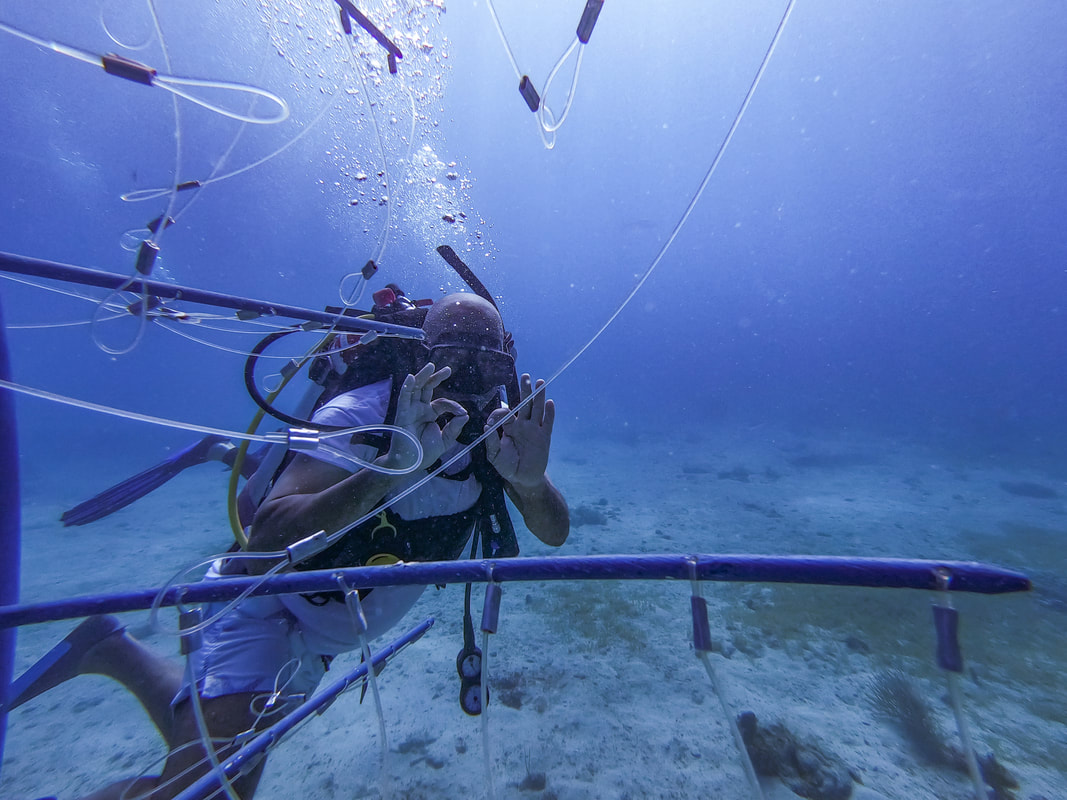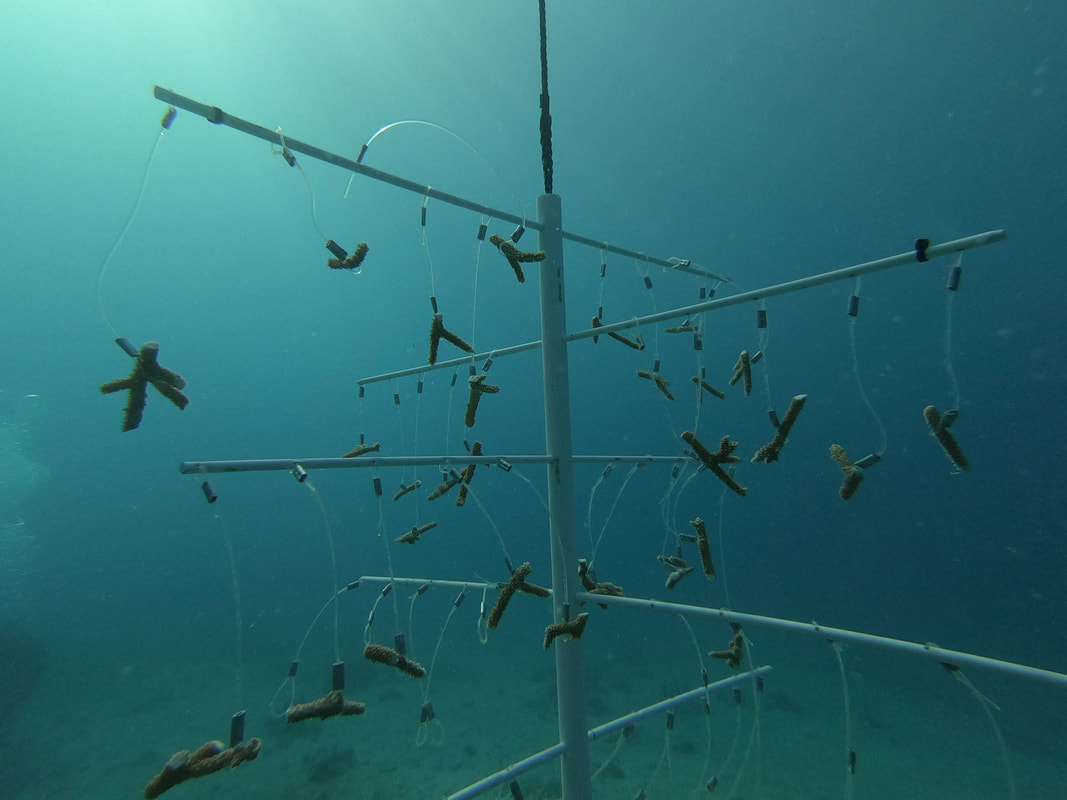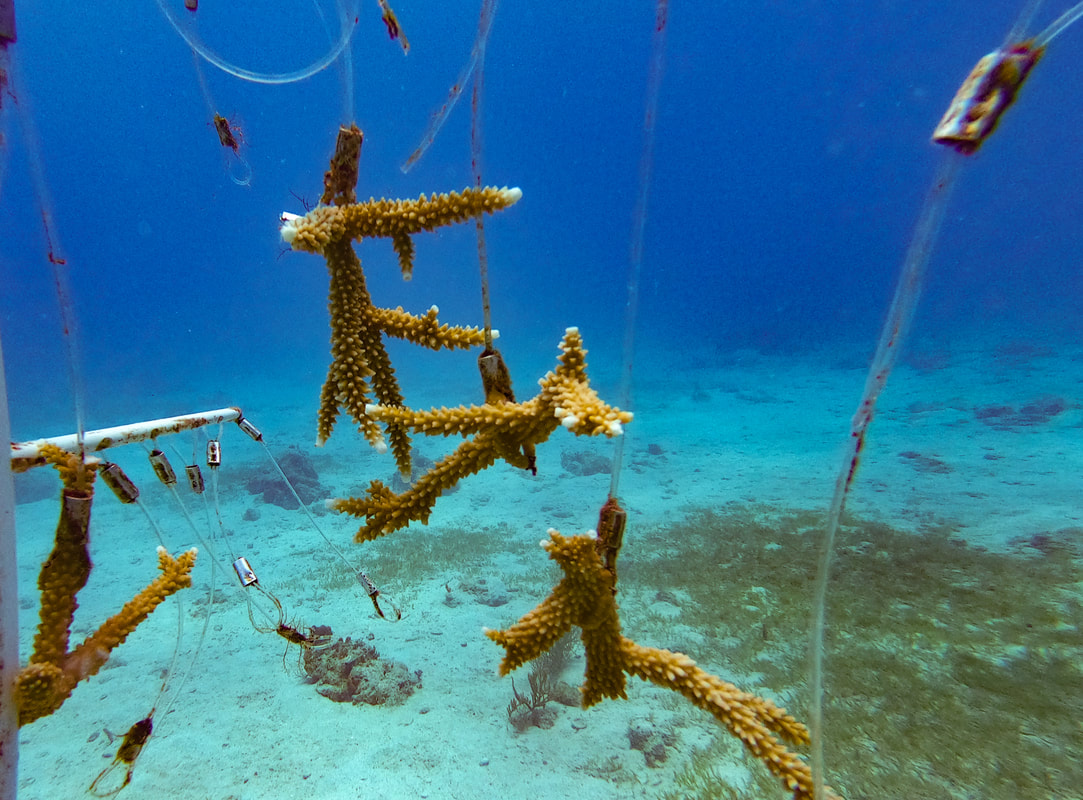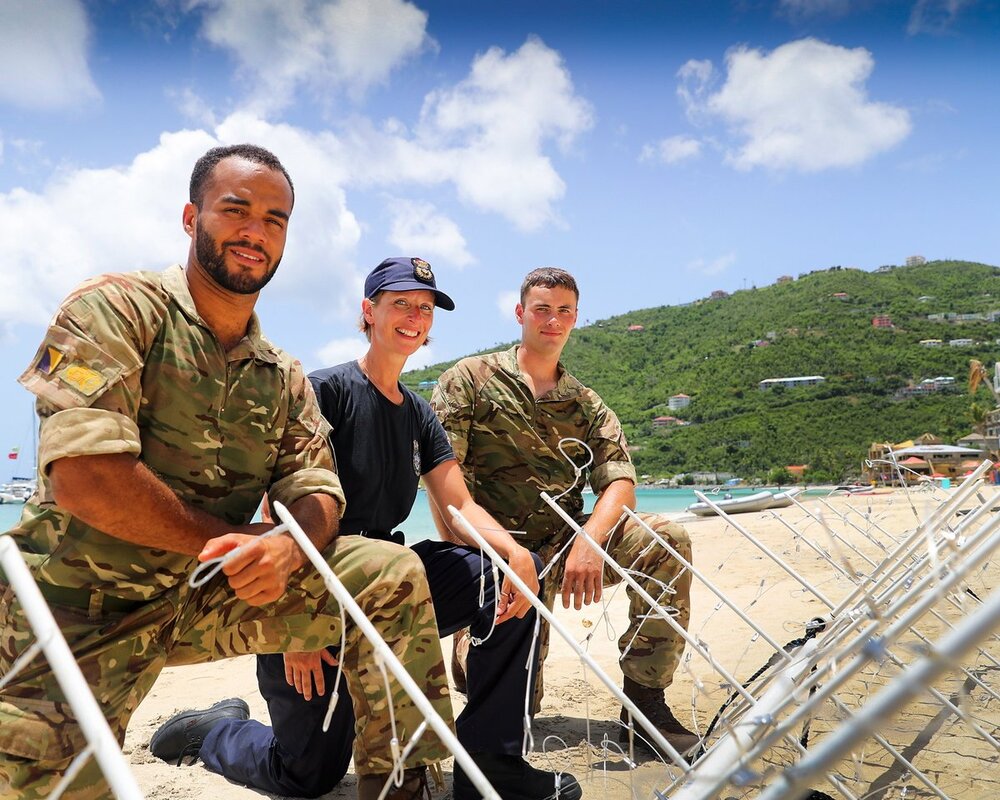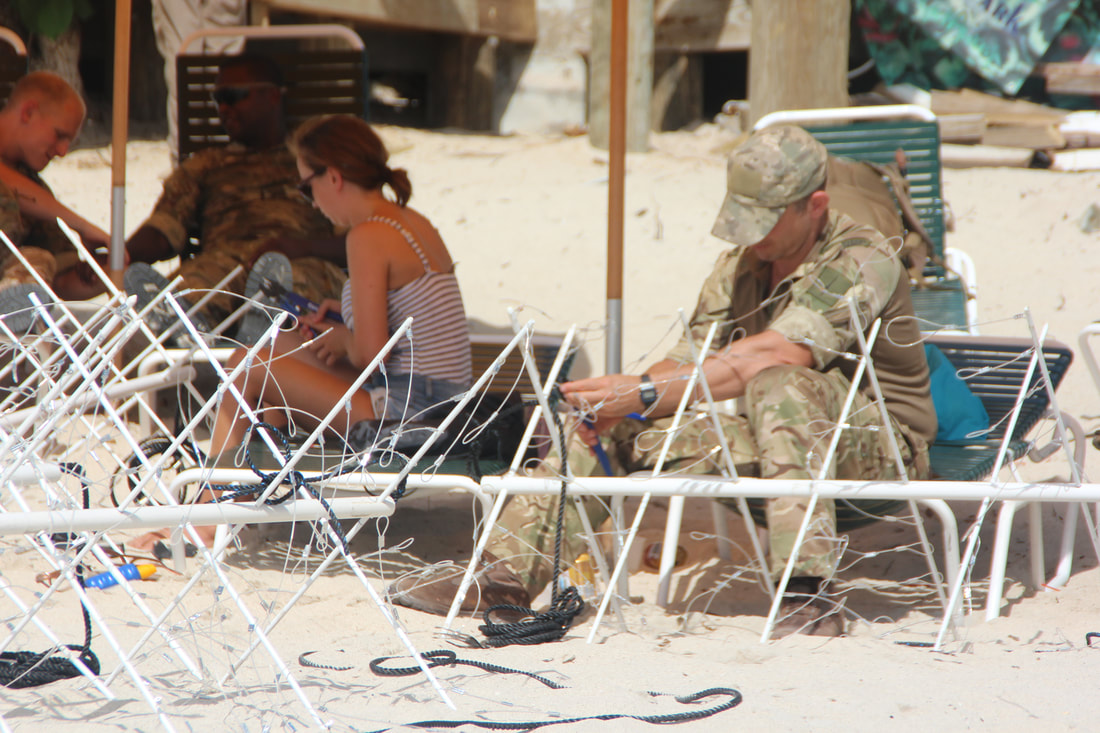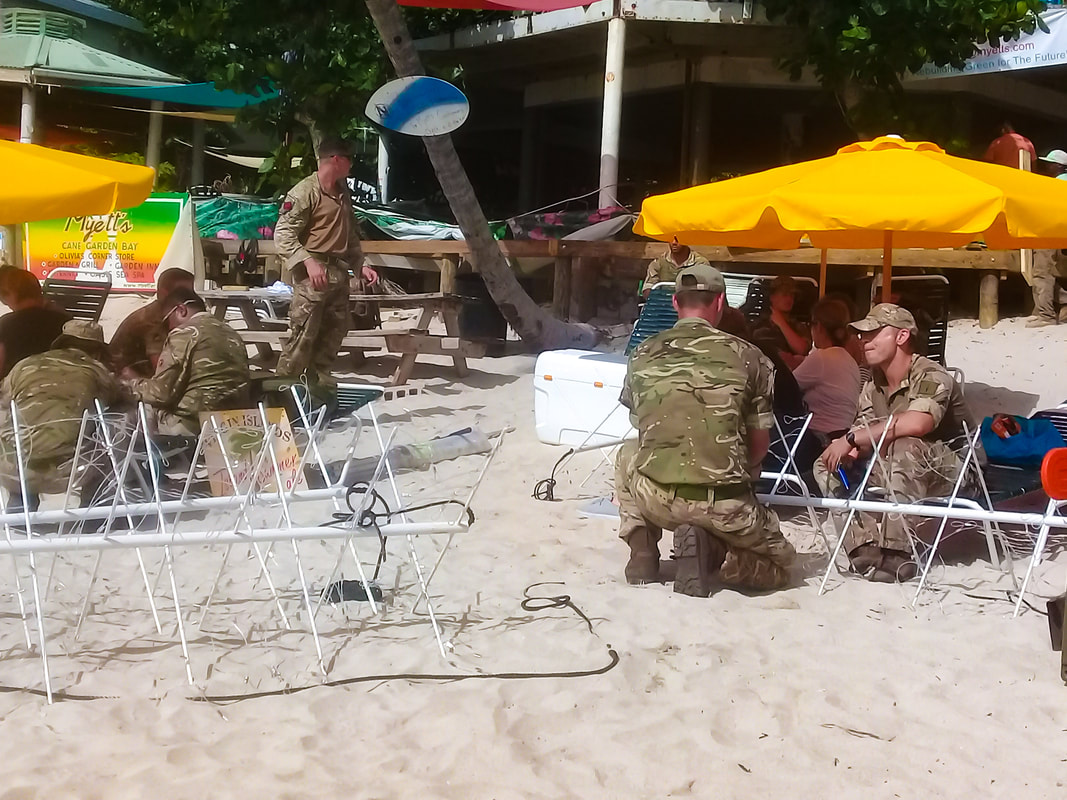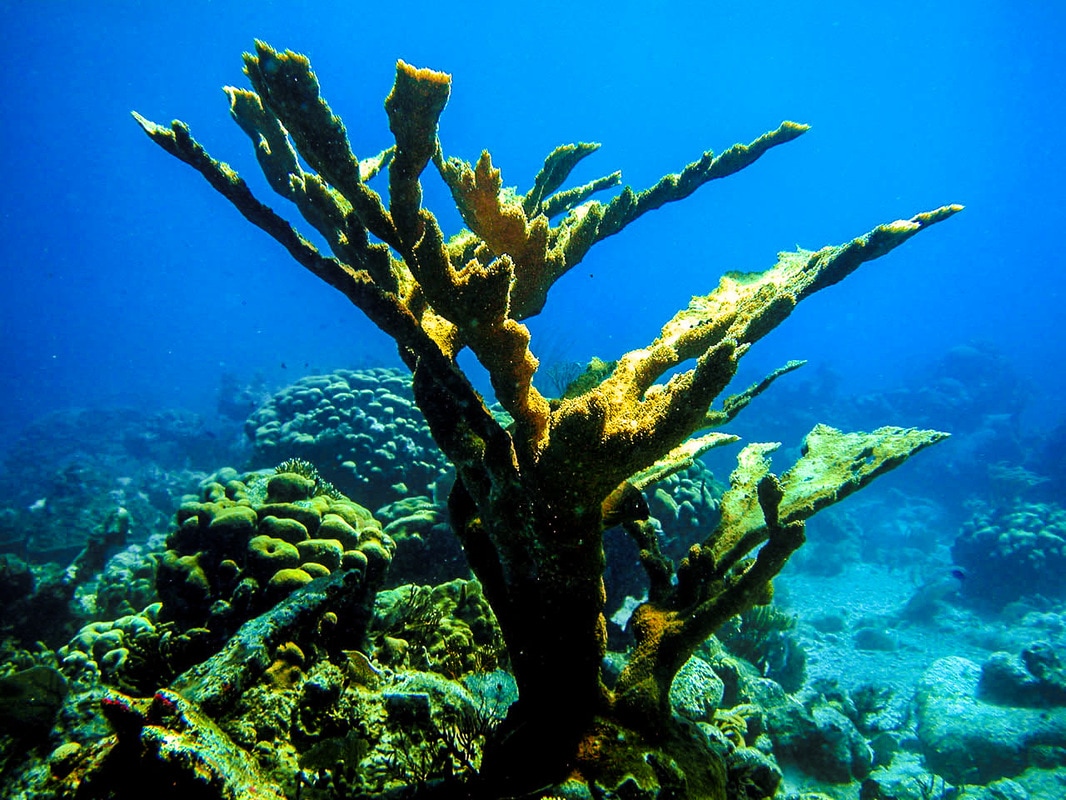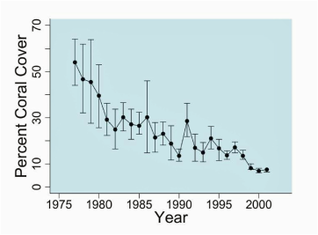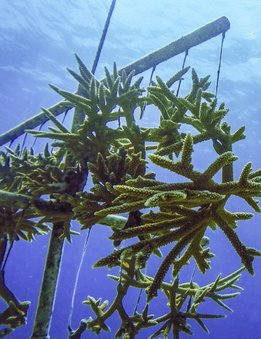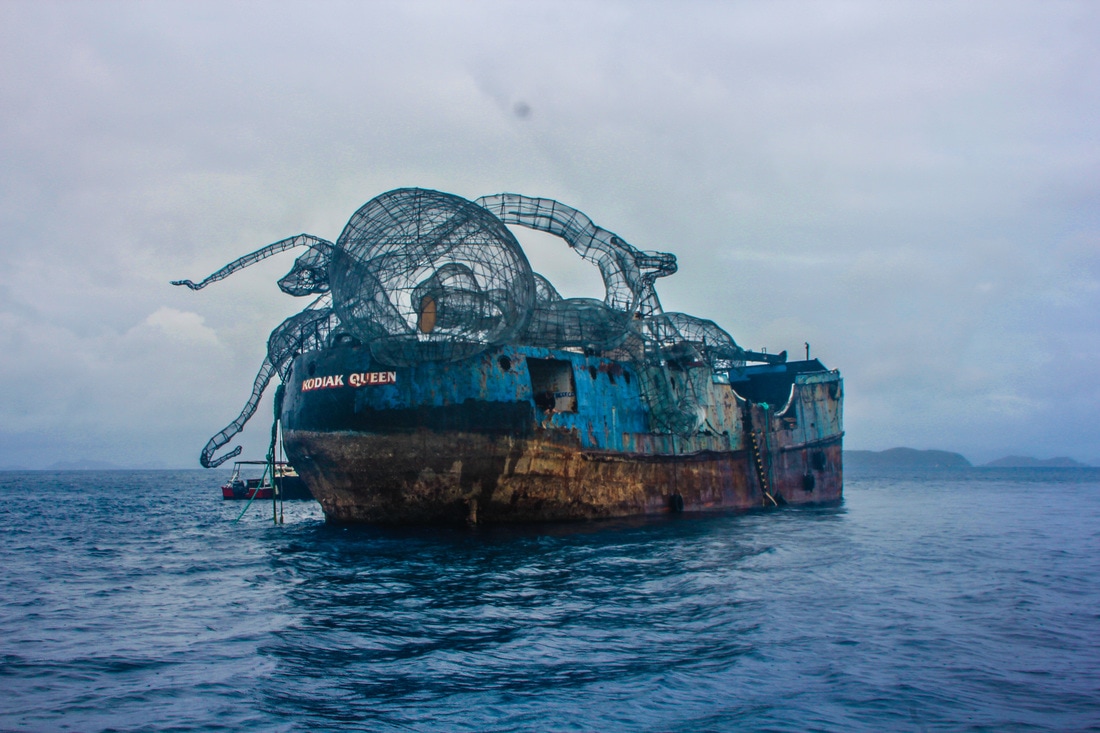CORAL RESTORATION
When the military helps you out...
Assembling the nurseriesThe new coral trees hold twice as many coral fragments and take a lot of time putting all the parts together. Thanks to some of the crew from the RFA Mounts Bay during their visit in the summer of 2018 - we managed to put most of them together. Funny part, many "civilians" were perplexed by the strange antennae they were building.
|
|
With our nurseries and outplant sites completely wiped out by hurricanes Irma & Maria we were devastated by the loss. However, within weeks after the hurricanes, we were contacted by the Coral Reef Consortium and a few months later, we were generously gifted new trees from the Coral Restoration Foundation and Blue Force.
|
On February 14th 2018, ARK presented in a webinar entitled:Building Restoration Programs to Withstand Hurricanes: Lessons Learned from Irma and Maria.
Despite our setbacks, there is no better time than now to learn from experiences and move forward. Many other restoration programmes throughout the region suffered loss but as a wider community that has come together to share ideas and best practices, ARK is confident that we continue help rebuild coral reefs in the BVI.
|
Caribbean coral reefs have declined up to 80% over the past 50 years. Locally, loss of coral is evident as some dive and snorkel sites are no longer visited because the reefs are simply dead and there is nothing left to see. Additionally, degraded reefs do not provide for healthy fishery resources or coastal protection. While education and changes in legislation to reduce human impacts on coral reefs are needed and those impacts resulting from climate change (such as coral bleaching) may be difficult to control, innovative advances in research have shown the introduction of ‘coral nurseries’ are a viable effort to enhance degraded coral reef ecosystems.
A coral nursery is similar to a plant nursery. Small broken coral fragments (usually caused by anchor damage or high wave energy) are placed in a nursery and carefully maintained to keep algae and predators from killing the coral. Once corals (specifically elkhorn and staghorn species of coral) develop branches, these branches can be clipped to start a new colony within the nursery. Eventually, one coral fragment can be propagated into 1000 corals over a short period of time based on the high growth rate of elkhorn and staghorn corals. These corals can then be transplanted in areas that are a low risk from anchor damage or sedimentation. We currently have two active coral nurseries but planning to add a few more nurseries to help kick-start coral growth on the BVI Art Reef project. |
Once the dominant species in the Caribbean, Elkhorn corals are now considered critically endangered.
Estimates of annual percent coral cover for the entire wider Caribbean region (re-plotted from Gardner et al. 2003). Found in 'Status and trends of Caribbean coral reefs: 1970-2012'. (2014) Edited by Jeremy Jackson, Mary Donovan, Katie Kramer and Vivian Lam. © Global Coral Reef Monitoring Network c/o International Union for the Conservation of Nature Global Marine and Polar Program 1630 Connecticut Avenue N. W. Washington, D. C. United States of America .
|
